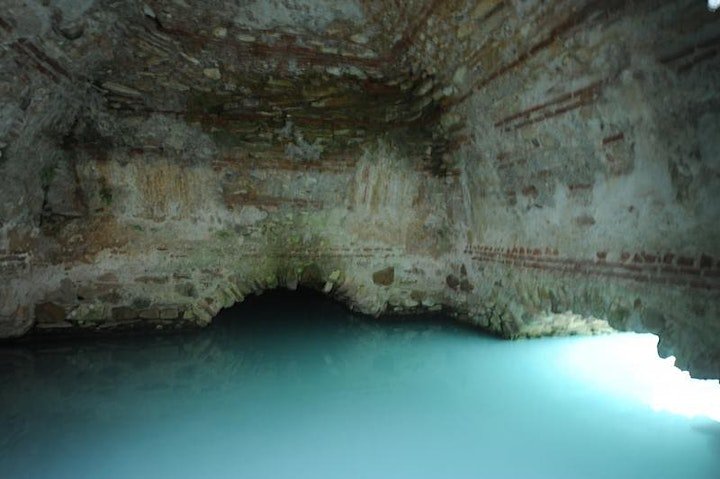The baths known as Baños de la Hedionda are one of the historical landmarks of the Utrera massif and of Casares in general. Their peculiarity as sulphurous baths and their long history of use by man have enriched their role not only as a historical and scientific reality, but also as a cultural element of the first order, which must have influenced the cultural heritage of the village since ancient times, and which also enjoys an ideal geographical location in the context of a territory particularly rich in human activity since antiquity.
The baths have a multitude of legends that attempt to explain their origin. One of them combines the magical-creative elements typical in such cases: according to the story, the demon that lived in this water exhaled its last breath when it was expelled by Santiago, which gave the water its sulphurous smell. This legend is taken up by many authors, all of them travellers, some of whom introduce certain modifications. However, the most popular is the one that attributes a noble historical origin to it: in the year 61 BC, the Roman troops were camped in that area ready to confront Pompey’s troops and, being infected with scabies, they found relief by bathing there; although, according to others, Julius Caesar himself was cured of a herpes infection and ordered the construction of the baths that are still preserved today.
What is certain is that since the oldest geographical treatises in which the municipality of Casares is mentioned, reference has been made to the curative properties of the Hedionda spring and its location.
Be that as it may, the historical importance is given by the spa complex, initially Roman in its collection and adaptation to the use of the fountain. Subsequent alterations, as a result of the variation in the flow levels of the spring, led the Arabs to retouch its structure and extend its walls and channelling, which were brought to light in the last archaeological intervention in the early 1990s. In addition, as of 2016, these baths have natural pools.
The complex of baths is completed with works from the 17th to the end of the 20th century, some of which are still preserved. Although the size of the remains found might not seem to be in keeping with the Roman magnificence of this type of construction, the studies carried out seem to confirm this Roman origin, although there must have been some alterations to the primitive structure.
More information on the events.




